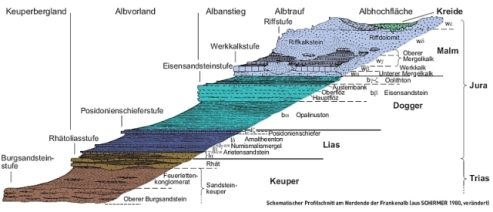 The geologist studies the formation, structure and history of the Earth's crust and rocks.
The geologist studies the formation, structure and history of the Earth's crust and rocks.
On the northern edge of the German low mountain come in multiple places ore-bearing rocks with iron ore to the surface. They form the basis for numerous ironworks and iron crushing rows in the Eifel, Siegerland and Sauerland.
The zinc and lead ores at the edge of the Eifel are formed by hydrothermal deposits.
Knowledge of processes and training help us to find them.
It makes little sense to dig a deep pit in your garden in the hope of finding a gold mine. Or...?
Every (developed?) country has a service that maps subsurface data. With construction and infrastructure works, drilling, etc., all data is stored in a database and linked. This way the information and maps are becoming more detailed. You can find out interesting things about your plot via the internet. This includes soil erosion, runoff map, erosion sensitivity map, minerals, drilling, groundwater level indicator, groundwater permits, probes, geothermal energy, landslides, infiltration measurements, soil profiles, groundwater extraction areas, salinisation map, reclamation, groundwater level indicator ...
The groundwater level is expressed in cm below ground level, and fluctuates from year to year and throughout the year. The least deep point is usually reached at the end of March and the deepest at the end of September. Rain or surface water penetrates (infiltrates) the soil to a non-permeable layer. Above, the soil becomes saturated ("saturated zone"). This zone is not viable, except for adapted marsh plants. You can draw water from it. The height to which the saturation occurs is the groundwater level or the phreatic level (also groundwater table). Pressure differences and capillary forces also determine the height and the flow direction. Chemical and also hazardous substances can be spread through leaching and dissolving. You can monitor the groundwater level via a monitoring well.
